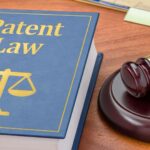If you plan to spend any time at all following patent litigation and regulatory policy relating to IP in the technology sector, you should be aware that a consistent global effort to minimize the value of patents (and often invalidate them altogether) has been underway for some time. This effort is being driven for the most part by technology implementers, and aims to lower (and if possible eliminate) the cost of patent licensing from said implementers’ products’ cost accounting equations.
Here is how it works: Say that Company A is a patent holder and Company B is a technology implementer. Company B is planning to build a product that needs Company A’s invention in order to perform a function. Fortunately, Company A is more than happy to allow Company B to use that invention through the technology licensing arm of its business. And let’s say that both companies agree that a fair market price for that license should amount to 0.05% of the cost of the product. Both companies sign an agreement, and they’re off: Company B builds and sells millions of units of its product, and both companies, through the licensing agreement that forms the basis of their partnership, are able to generate revenue.
Say that Company A makes a net $5 on every sale of Company B’s device, which costs $500 to manufacture. Company B, meanwhile, is able to sell its device for $800, and therefore turn a $300 profit per device. In this scenario, Company A (the innovator and patent holder) makes $5 per unit, and Company B (the technology implementer and patent licensee) makes $300 per unit. And so for a while, everyone is happy: Consumers are enjoying their cool new device, Company B has a successful and profitable product on its hands, and Company A has successfully generated revenue from the years of research and development that have gone into developing that patent, while enabling a technology implementer to launch a successful and value product. This, at its core, is how a healthy technology licensing model functions in the technology sector, and how innovators and implementers typically work together to productize innovation in the marketplace.
But now, let’s say that Company B, the technology implementer, feels pressure from its investors to become more profitable. And one of the ways it decides to meet this objective is to cut costs from its model. Company B’s accountants suggest that one item in the cost column that would be useful to cut is patent licensing. Although $5 per device seems insignificant, turning $5 per device into, say, $1 per device would save the company millions of dollars per year. Add up all of the other technology licensing that goes into their devices, and Company B might be able to cut its costs by as much as 20 percent. Depending on the company, that type of effort could be worth billions of dollars in added profitability each and every year.
This is the reason why many technology implementers have been quietly but consistently attempting to use the courts, regulatory agencies, standards setting organizations (SSO), and various litigious schemes (like patent holdout) to devalue patents around the world.
One notable example of a successful effort by technology implementers to weaken the value and enforceability of patent technologies came in 2015, when the IEEE (one of the larger SSOs, which oversees standards like WiFi and Bluetooth) suddenly decided to alter its longstanding intellectual property rights (IPR) policy concerning standard essential patents (SEPs), deviating from developing U.S. law regarding the determination of reasonable royalty rates and the availability of relative injunctive relief. The IEEE’s new policy wasn’t exactly subtle in its intent, as evidenced by the new policy’s phrasing below (emphasis ours):
“Reasonable Rate” shall mean appropriate compensation to the patent holder for the practice of an Essential Patent Claim excluding the value, if any, resulting from the inclusion of that Essential Patent Claim’s technology in the IEEE Standard.
In addition, determination of such Reasonable Rates should include, but need not be limited to, the consideration of:
-
- The value that the functionality of the claimed invention or inventive feature within the Essential Patent Claim contributes to the value of the relevant functionality of the smallest saleable Compliant Implementation that practices the Essential Patent Claim.
- The value that the Essential Patent Claim contributes to the smallest saleable Compliant Implementation that practices that claim, in light of the value contributed by all Essential Patent Claims for the same IEEE Standard practiced in that Compliant Implementation.
- Existing licenses covering use of the Essential Patent Claim, where such licenses were not obtained under the explicit or implicit threat of a Prohibitive Order, and where the circumstances and resulting license are otherwise sufficiently comparable to the circumstances of the contemplated license.
As one can plainly see, the language of the new policy emphasizes a concept defined as “smallest saleable compliant implementation,” essentially reducing the value of a SEP to its smallest saleable unit value as opposed to a system-level unit value. This essentially means that SEPs with system-level implementations can be broken down into their smallest individual implementations, where the combined value of a system implementation isn’t relevant to a value determination. One way to look at this would be to determine the value of an apple pie and its recipe not by tackling the problem holistically (taking into account the combined value of the entire pie making process), but instead by merely accounting for the value of its individual ingredients and pie-making steps.
Interestingly, the “smallest saleable compliant implementation” theory behind the IEEE’s new policy was likely derived from a “smallest saleable patent practicing unit” concept used in U.S. patent damages law as an evidentiary principle to help avoid undue prejudice or confusion among lay jurors in U.S. jury trials. It was never intended to be used to guide the wholesale valuation of SEPs by SSOs, let alone limit injunctive relief.
In LaserDynamics v. Quanta (2013), the issue was a fear by the Court that a lay jury might be confused where “small elements of multi-component products are accused of infringement.” Per the Court, “calculating a royalty on the entire product carries a considerable risk that the patentee will be improperly compensated for non-infringing components of that product.” The use of the concept was therefore limited to the Court’s fear that failing to itemize the value of individual elements of multi-component products, to isolate infringing elements from the non-infringing ones, might inflate damages. This absolutely does not form any credible or relevant basis whatsoever for the IEEE’s use of the concept.
Equally relevant to this discussion was the Ericsson v. D-Link case in 2014, which led the Federal Circuit to opine that the Entire Market Value Rule (EMVR), under which a hypothetical “smallest saleable patent practicing unit” would fall, should have two considerations: (1) a “substantive legal rule” establishing that an “ultimate reasonable royalty must be based on the value that the patented invention adds to the end product,” and (2) an “evidentiary principle” to determine a reasonable royalty rate “to help our jury system reliably implement” said “substantive legal rule.” In other words, the Federal Circuit clearly explained that its “smallest saleable patent practicing unit” concept was meant to be used solely as an evidentiary principle in jury trials, not as a valuation framework for patents, let alone SEPs: “Where the entire value of a machine as a marketable article is properly and legally attributable to the patented feature, the damages owed to the patentee may be calculated by reference to that value. Where it is not, however, courts must insist on a more realistic starting point for the royalty calculations by juries– often, the smallest salable unit and, at times, even less.”
The IEEE’s corruption of this otherwise simple evidentiary principle for jury trials into a scheme to devalue SEPs is just one of many examples of how technology implementers can influence or otherwise weaponize institutions to devalue IP in the technology sector.
To be continued.
The Fatty Fish Editorial Team includes a diverse group of industry analysts, researchers, and advisors who spend most of their days diving into the most important topics impacting the future of the technology sector. Our team focuses on the potential impact of tech-related IP policy, legislation, regulation, and litigation, along with critical global and geostrategic trends — and delivers content that makes it easier for journalists, lobbyists, and policy makers to understand these issues.
-
The Fatty Fish Editorial Teamhttps://staging-fattyfish.kinsta.cloud/author/fattyfish_editorial/January 14, 2022
-
The Fatty Fish Editorial Teamhttps://staging-fattyfish.kinsta.cloud/author/fattyfish_editorial/January 14, 2022
-
The Fatty Fish Editorial Teamhttps://staging-fattyfish.kinsta.cloud/author/fattyfish_editorial/January 14, 2022
-
The Fatty Fish Editorial Teamhttps://staging-fattyfish.kinsta.cloud/author/fattyfish_editorial/January 14, 2022











